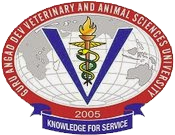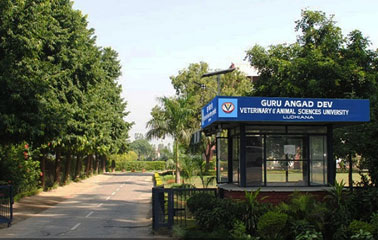

In the last decade, vultures are nearly vanished from India and it is due to this reason they are listed by World Conservation Union as ‘Critically Endangered’. These views were expressed by Dr Kirti Dua, Incharge, Wild life Centre of Guru Angad Dev Veterinary & Animal Sciences University and Professor Veterinary Medicine. He was discussing the matter in context with World Earth Day which falls on 22nd April every year. He said that Vultures are magnificent birds that not only fulfill a vital function in our ecosystem, but are part of our culture. It is a large, carnivorous bird that is most well known for its scavenging nature. Vultures have keen eyesight and are believed that they are able to spot a three-foot carcass from four miles away on the open plains. They rarely attack healthy animals, but may kill the wounded or sick prey.
The initial hypotheses for the drastic decline in population were non-availability of food (dead livestock) as they were perhaps being removed for commercial purposes, or an unknown viral epidemic disease. But subsequently it was detected Diclofenac; a frequently used painkiller in the domestic animals is the main and probably the only cause of the crash in vulture numbers across South Asia. Experiments showed that captive vultures are highly susceptible to Diclofenac, and are killed by kidney failure within a short time of feeding on the carcass of an animal treated with the normal veterinary dose. This does not mean that other causes of mortality should be ignored. Chicken, New World vultures (that are more closely related to storks) and crows can tolerate very high doses of diclofenac without mortality. Some scavenging birds in Asia, including the commonly seen black kite, have so far shown no signs of decline.
Removal of a major scavenger from the ecosystem will affect the equilibrium between populations of other scavenging species and/or result in increase in putrefying carcasses. In some areas the population of feral dogs, being the main scavenging species in the absence of vultures, has been observed to have increased resulting in disease risks for wildlife, livestock and humans like rabies, anthrax etc. The decline in vultures has also affected the traditional custom of the Parsis of placing their dead in the ‘Towers of Silence’ for vultures to feed upon removing diclofenac from the environment will allow the eventual recovery of vulture populations which, may take several years. Government has banned the use of this drug in domestic animals. Meloxicam is a safe alternative to the diclofenac.
Therefore it is essential to protect vultures in an environment where they will not be exposed to the drug. In order to ensure vulture survival it is necessary to bring them into captivity for breeding purposes. Besides this, general awareness in the public and successful captive breeding will enable vulture numbers to increase, eventually allowing for the release of vultures back into the wild, once their food source in Asia is free of diclofenac.
